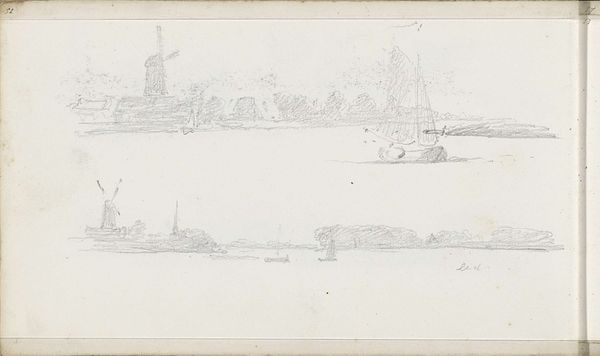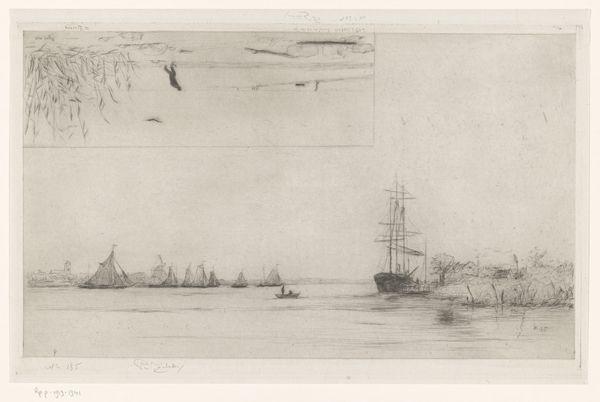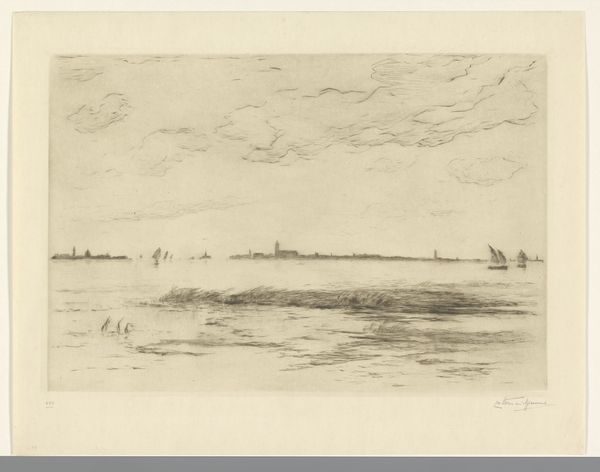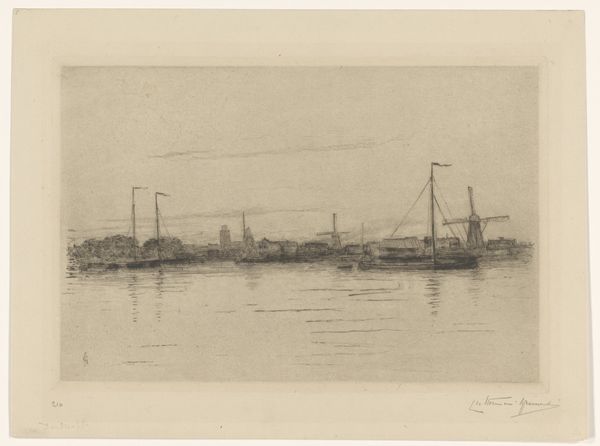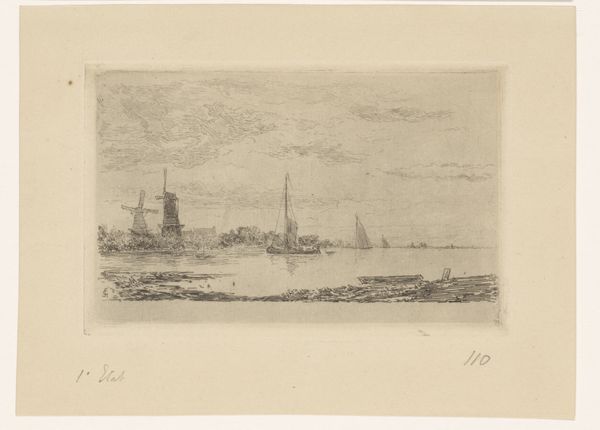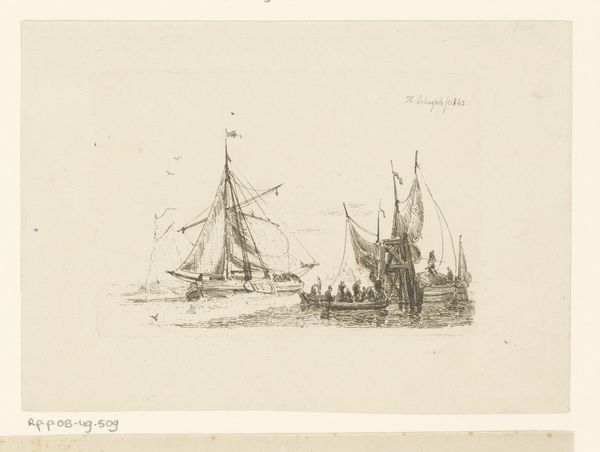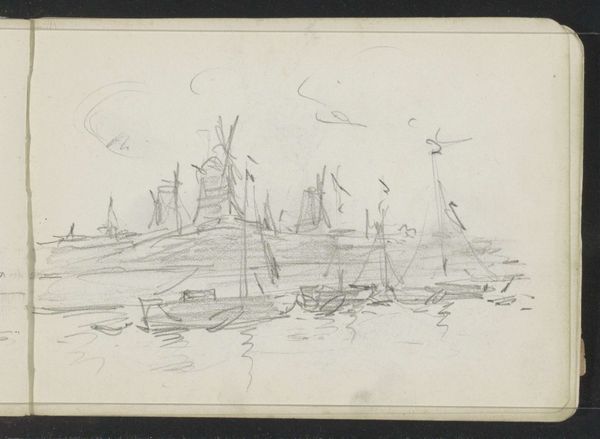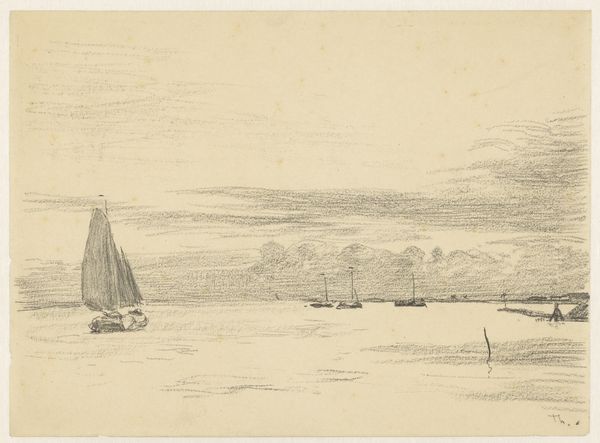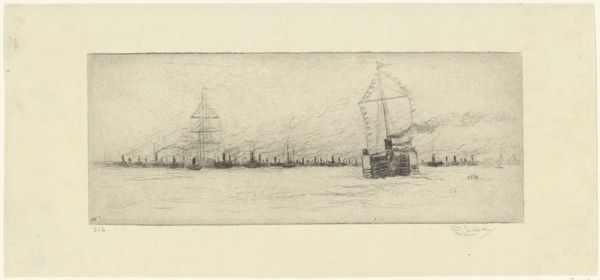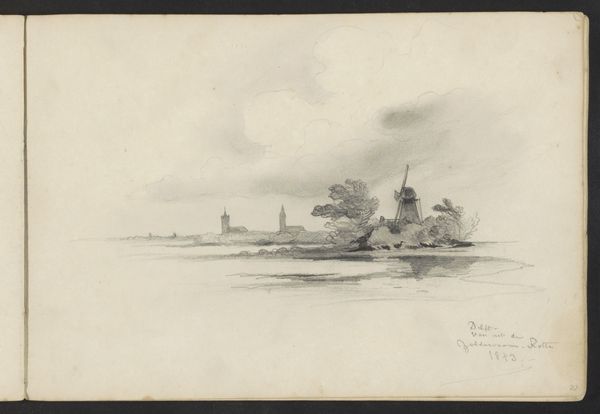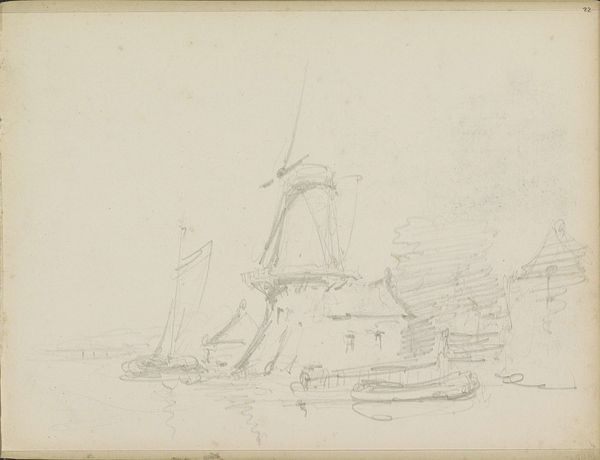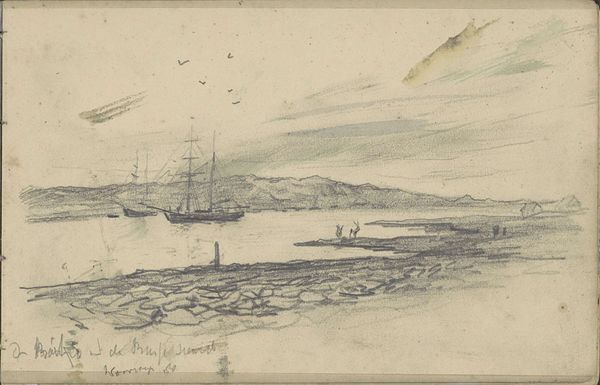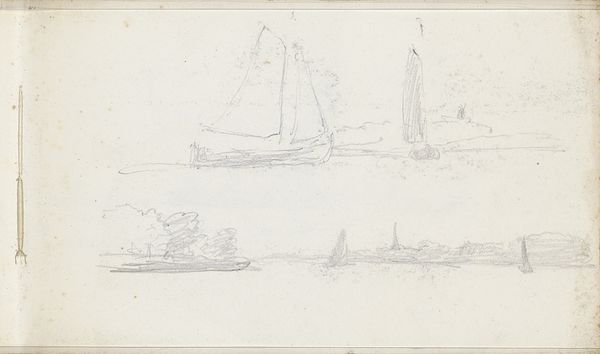
drawing
#
architectural sketch
#
drawing
#
aged paper
#
light pencil work
#
old engraving style
#
hand drawn type
#
etching
#
personal sketchbook
#
pen-ink sketch
#
pen work
#
sketchbook drawing
Dimensions: 106 mm (height) x 172 mm (width) (bladmaal)
Editor: This is a sketchbook page by P.C. Skovgaard, titled "Skitsebogsblad fra Venedig" – that's "Sketchbook page from Venice" – created in 1854. It’s a delicate drawing with what looks like pencil or ink on paper. It's so sparse and light, yet captures this sort of expansive stillness. What stands out to you about this piece? Curator: The Venice Skovgaard depicts is a space of both serenity and implied power dynamics. Look at the warships anchored there, contrasted against the distant architecture and tiny gondolas. We can think about Venice in 1854 – a city with a long history of maritime power, but now under Austrian rule. Do you think Skovgaard is just recording a scene, or is he perhaps hinting at something more through his compositional choices? Editor: That’s fascinating! I hadn't considered the Austrian rule. I was so caught up in the peacefulness. I guess the warships are pretty prominent though, almost like silent witnesses. It makes you wonder about his perspective, being a Danish artist visiting at this time. Curator: Exactly! Consider his background. Skovgaard was deeply invested in Danish national identity and landscape painting. Seeing Venice, a place of immense cultural weight under foreign control, might have resonated with his own anxieties about national sovereignty and cultural preservation. The sketchbook format itself – intimate and portable – suggests a personal reflection on these themes. What stories do you imagine him telling himself through this sketch? Editor: I see it now – it is more complex than I first assumed. Perhaps this isn’t just a simple travel sketch but a subtle commentary on power and identity, filtered through his own cultural lens. I’ll never look at a travel sketch the same way. Curator: Precisely. Art often functions as a mirror reflecting societal tensions, inviting us to engage with history on a personal level.
Comments
No comments
Be the first to comment and join the conversation on the ultimate creative platform.
